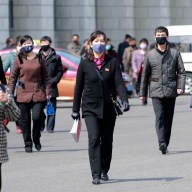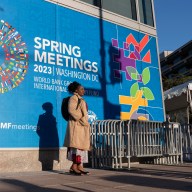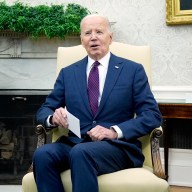The iconic killer whales that drew us to this tiny community on the northern tip of Vancouver Island were nowhere to be seen, but that didn’t spoil our visit.
There was plenty of other wildlife on view during a sightseeing adventure on the water. But earlier, as we embarked on the ferry to Vancouver Island, we got an unexpected thrill. Just five minutes out of the Tsawwassen terminal, a killer whale and her calf crossed the bow of the giant ferry that links the B.C. mainland to the Island.
Those were the only killer whales we saw on the trip planned specifically to see the black-and-white marine mammals.
Our destination was Telegraph Cove, about a four-hour drive from Nanaimo where the ferry arrives from the mainland.
The drive north begins along the waters of Georgia Strait and winds through vast evergreen forests, past blue lakes and the occasional colourful totem pole.
Telegraph Cove is nestled in a little bay carved out of the rocky coastline. We stayed in a small hotel overlooking the harbour. There are also 120 camping and RV sites available just a short walk from the cove.
Getting insight into the history of Telegraph Cove is easy: At the Killer Whale Cafe, one of the few places to eat in town, the walls display framed articles and other material offering stories about the area.
The community started out as a telegraph station before the First World War, was later the site of a fish saltery and grew into a booming sawmill town.
These days, Mary and Jim Borrowman, owners of Stubbs Island Whale Watching, are the only people who live year-round in Telegraph Cove proper.
It was on one of their two boats that we set out last July with a few dozen other whale watchers hoping to see killer whales.
Within five minutes, a small pod of Dall’s porpoises started racing along the front bow, flirting back and forth with the boat and showing off their speed and agility.
Their colouring is similar to an orca’s, but they’re much smaller can’t be confused with that species.
While disappointed that we didn’t see killer whales, we were still delighted to see all the other wildlife on the four-hour outing, including humpback whales, harbour seals, sea lions and eagles soaring overhead.
Mary Borrowman said people from around the world come to see the pod of killer whales that spend much of the summer off the northern end of Vancouver Island. July, August and September are peak whale-watching season.
“We are very careful — we have been in business for 30 years (and) we have never guaranteed a sighting, ever,” she emphasized.
“It’s very difficult to explain to people … that we are dealing with wild animals in their natural habitat and it is a privilege from Mother Nature when we get to view these animals.”












